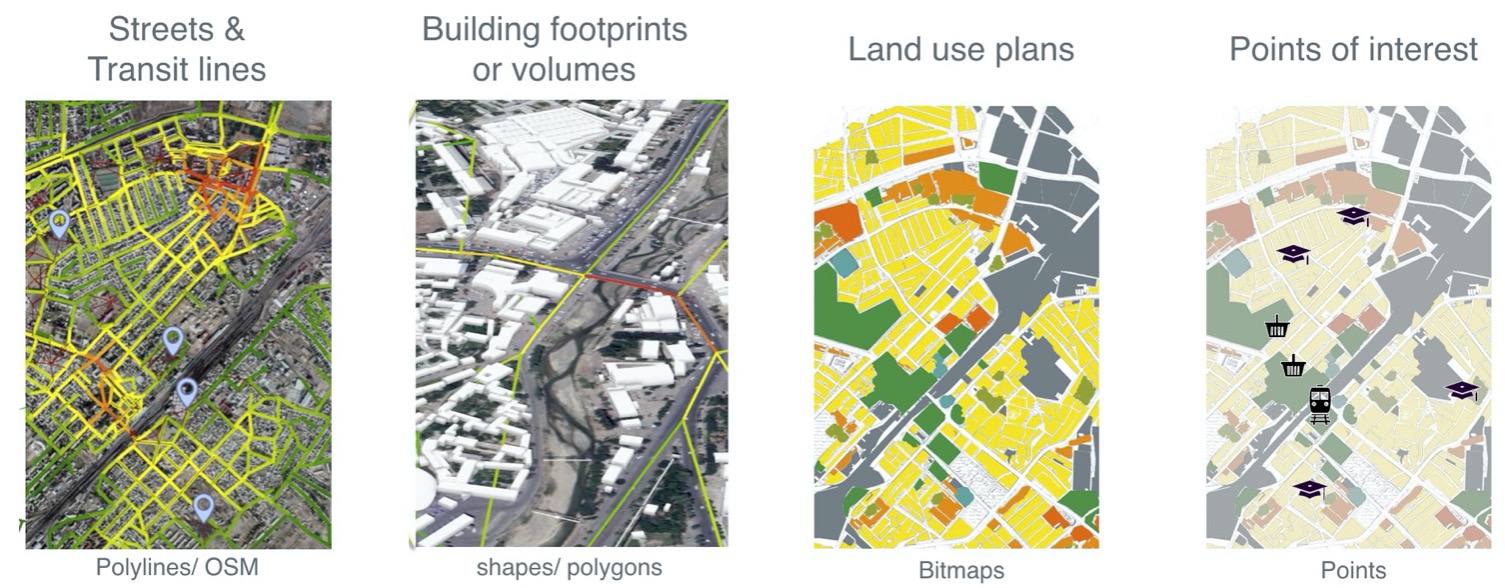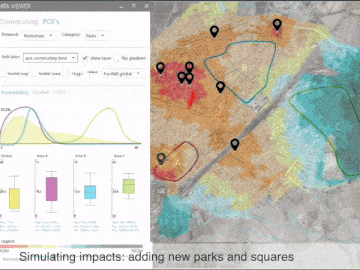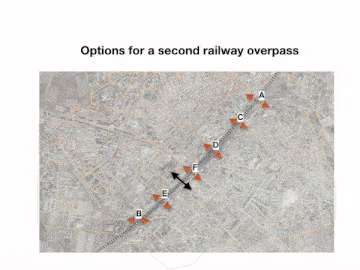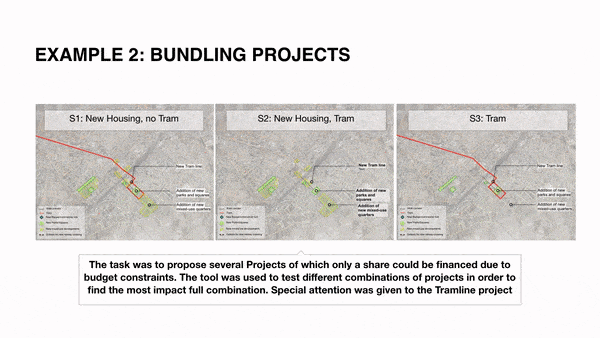Data Augmented Urban Renewal in Uzbekistan
Introduction
In a joint project with the World Bank, Superwien Architects and the Austrian Institute of Technology, our integrated simulation framework was used in the urban renewal process for two medium sized cities in Uzbekistan: Kagan and Chartak. The task was to propose between 5 to 10 intervention (eg. implementation of an eco-trail, renovation of the bazaar and public spaces among others) for each city and then rank them in a cost-benefit analysis as not all projects could be funded.

The framework was employed to assist design decisions, to conduct impact analysis of individual projects and for testing which combination of projects returns the maximum leverage.

Despite very limited data availability (street center lines, bitmap of official masterplan) our model’s flexibility allowed us to reconstruct a transportation graph and to estimate both the distribution of jobs and population, which together formed the basis for our analysis.
The three animations below give an impression on the workflow (from left to right): 1) Points of interest of the category leisure/green space are added, the system provides immediate feedback on key accessibility metrics. Alternatively difference maps can be displayed to help deciding on locations. 2) sub-areas can be defined to investigate how specific neighborhoods are affected by an intervention in particular. Next, accessibility to the stations of a proposed tramline are visualized, including computed catchment areas, served people and footfall volumes to stations. 3) The Street network centrality is analyzed for several radii, giving insights on centers of different scales and the spatial relation between them.



___________________________________________________________
Below, the application of the toolbox to decide upon the location of a second pedestrian railway overpass in Kagan will be outlined exemplary in more detail.

Allocating a second railway overpass
First of all, six potential locations for the second bridge were located and evaluated by several indicators. Based on the results three options were selected for further analysis as they performed significantly better then the others. Next to accessibility and commuting time related measures, the potential change on pedestrian frequency and footfall was analyze as well. Which, can be helpful for anticipating and planning for retail locations or prioritizing street renovations among others.

Bundling projects given budget constrains
Due to budget constrains only a share of proposed project were about to be implemented. Our framework was additionally employed to systematically test different combinations to optimize project bundles toward a better impact-cost ratio.
Research Team: Wolfgang Loibl, Hans-Martin Neumann, Ghazal Etminan, Ernst Gebetsroither, Ondrej Vesely, Serjoscha Düring
